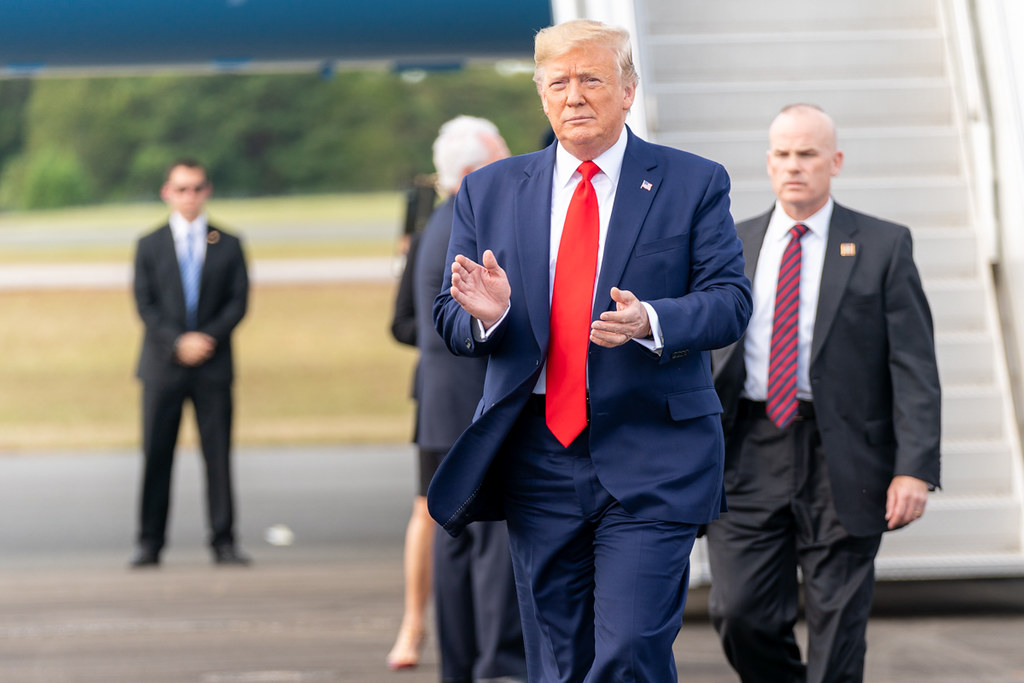Trump conflicts of interest top 2,500, CREW releases live tracker

If President Trump’s leadership sometimes feels haphazard and temperamental, it’s in contrast to one area where he seems to maintain a laser focus: Trying to use the presidency to enrich himself through the private businesses he still owns as president. The pervasive self-dealing and personal enrichment that has defined the Trump era is certainly unprecedented, but not unforeseen.
When it was announced that he would retain a financial interest in the Trump Organization while serving as president, CREW and others decried the decision. Since then, CREW has tracked interactions between the Trump Organization and the government Trump sits atop, as well as those trying to influence it.
As the evidence of President Trump’s conflicts of interest continued to mount, CREW put out two extensive annual reports tallying these conflicts of interest, and published another one last August when the total blew past 2,000. Now, after less than three years in office, President Trump has racked up more than 2,500 conflicts of interest, an average of more than two per day.
In the face of these ballooning totals, periodic reports just aren’t enough. That’s why, today, CREW is launching a new resource that will allow the public to track President Trump’s conflicts of interest on a daily basis.
View CREW’s conflicts tracking tool here.
The two months since our last report have been plagued by scandals that illustrate why it is critical to make this information more readily available to the public. In late August, President Trump used the stage at the G-7 summit to confirm that his administration was considering his own Miami-area resort to host next year’s summit. Last week, his administration formally announced it would follow through on hosting it at Doral, admitting that the idea to do so came from Trump himself. Then, facing sharp, largely bipartisan criticism, President Trump called off the plan in a series of tweets. This tool will help anyone who wants to track the conflicts of interest President Trump has racked up, whether or not he announces them by tweet.
In early September, Vice President Mike Pence traveled to Ireland to meet with Taoiseach Leo Varadkar in Dublin. But instead of staying in Ireland’s largest city, he stayed at a remote resort on the other side of the country, which the President owns. Pence’s team said Trump suggested it, but the President denied that, saying it was chosen because it’s “a great place” and “the best.” In other words, the same reason, according to the President, that Attorney General Bill Barr picked a Trump hotel for his holiday party that’s estimated to generate more than $30,000 in hotel revenue.
Last month, the Department of Defense explained to Congress that a jump in military stays at the President’s Turnberry, Scotland golf resort has resulted in at least $184,000 in revenue for the club, courtesy of U.S. taxpayers—nearly three times what the department spent there over a similar period before Trump took office. The President’s conflicts related to his businesses aren’t just unethical–they’re expensive.
The next week, the White House released a reconstructed transcript of a phone call between President Trump and Ukrainian President Volodymyr Zelensky during which Trump pressured his Ukrainian counterpart to investigate his political rival, former Vice President Joe Biden. During the call, Zelensky drew Trump’s attention to the fact that he had patronized one of President Trump’s businesses the last time he was in New York, apparently trying to appeal to Trump in his official capacity by invoking the President’s private business. The House has since launched an impeachment inquiry that may include scrutiny of Trump’s business interests.
The above instances are by no means exhaustive, but the fact that they all occurred in a matter of just two months is a striking testament to the need for a tool to track President Trump’s conflicts of interest and to show that new conflicts do not happen in a vacuum. CREW is proud to provide the most comprehensive resource available for lawmakers, journalists, and the public to understand the blurred lines between the Trump administration and the businesses President Trump still profits from and to provide valuable context for the new conflicts that will inevitably be discovered in the coming weeks and months.